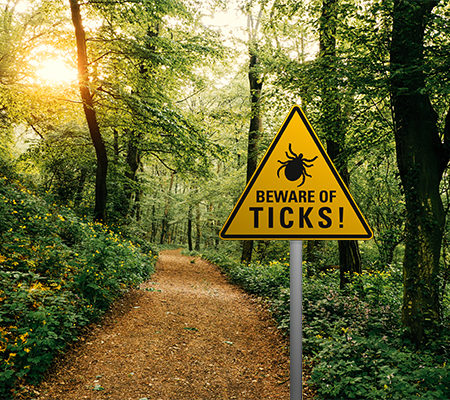
Tick season can last well into fall. Ticks are being found farther north than before thanks to changing weather patterns.
Summer ends. Tick season ends.
Right?
Wrong.
Tick season, according to a Marshfield Clinic Health System tick-borne disease expert, can last well into fall, depending on how warm the weather is.
Also, ticks are being found farther north than before thanks to changing patterns that keep weather warmer longer.
“Weather, temperature, rainfall patterns are changing and ticks can better survive over the winter,” according to Dr. Jennifer Meece, who directs the Integrated Research and Development Laboratory, Marshfield Clinic Research Institute at Marshfield Clinic Health System. The Research Institute has been actively involved in tick-borne disease research since the 1990s.
Illnesses from mosquito, tick and flea bites more than tripled in the United States from 2004 to 2016, according to the Centers for Disease Control and Prevention, and new emerging diseases are being detected.
New ticks in town
An invasive tick species, the Asian longhorned tick, has been identified in the U.S., first reported in 2017. It’s the first to be introduced in the U.S. in the last 20 years. Although it’s not been seen in Wisconsin, it has been found in Arkansas, Connecticut, Kentucky, Maryland, New Jersey, New York, North Carolina, Pennsylvania, Tennessee, Virginia and West Virginia.
In Asia, the tick carries a virus that causes human hemorrhagic fever, killing up to 30 percent of its victims. This virus has not been detected in the U.S., though it is related to the Heartland virus, another life-threatening tick-borne disease known in the U.S.
“We need to understand whether this newly-introduced tick is able to spread diseases we have in our country,” Meece said.
The Asian longhorned tick does not need a mate to have offspring. One female can lay 2,000 eggs on a host’s surface. In some parts of Asia, cows can lose so much weight due to these tick bites that milk production drops by 25%, so there are both health and economic implications.
Another tick found in the U.S. is the Lone Star tick, whose geographic range in expanding. As the tick range has expanded, an unusual food allergy has been identified, linked to the Lone Start tick’s bite.
“Some people bitten by this tick develop a food allergy to red meat. It’s a real thing, a weird thing, called alpha-gal syndrome,” she said. “The tick’s saliva containing a sugar molecule called alpha-gal is injected into the body. Three to six hours later it triggers a reaction that may later produce allergic reactions to red meat.”
This tick carries diseases including species of Ehrlichia and several viruses.
Prevention is key for tick-borne illness
“It is important not to be afraid of the outdoors,” Meece said. “Be outdoors, but use common sense to protect yourself, your family and your pets.”
Click on this link to learn more about how to protect yourself from ticks of all kinds. To request printed copies of this tick information, send an email message to nfmcsec@marshfieldclinic.org or call 1-800-662-6900 and press “0.”
Monitor your health closely after any tick bite, Meece said. And, talk with your doctor if you develop a rash, fever, headache, joint or muscle pain or swollen lymph nodes within 30 days after a tick bite.
Related Shine365 posts
Tick, tick, tick: Be aware of Powassan virus


I work in the woods at least three or four days a week all summer and never get a tick bite. Spray insect repellent around the souls of each shoe and on the bottom of your pant leg. Keeps them off.
That's a great tip, David!
Thanks for reading Shine365 🙂
Jake